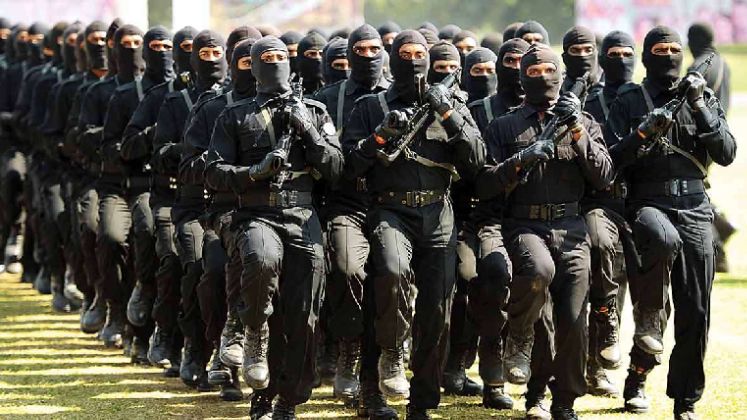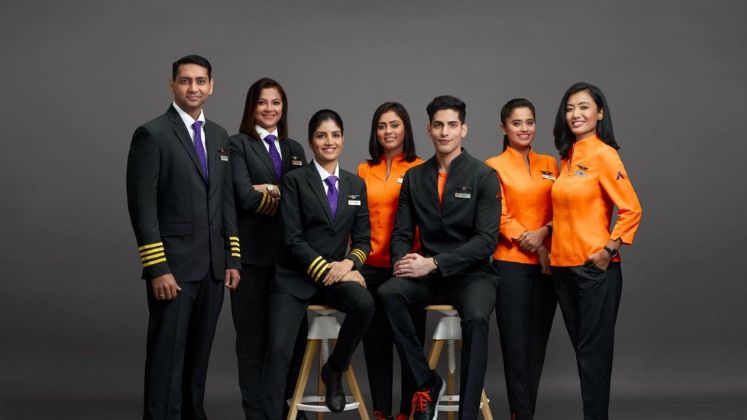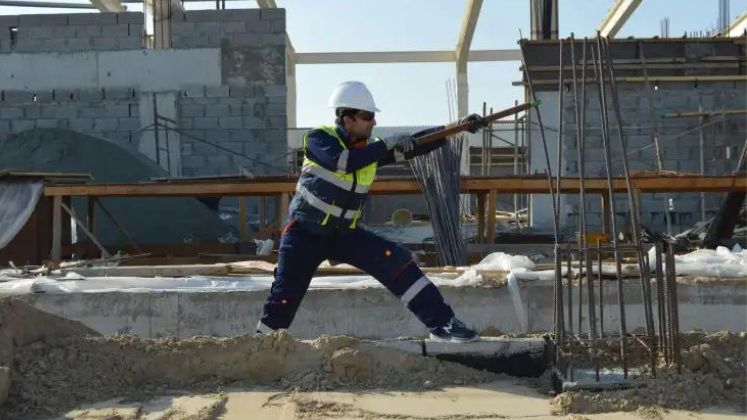In the world of workwear, uniforms are the unsung heroes—more than just outfits, they’re the superheroes of identity, safety and professionalism. From the factory floor to the corporate boardroom, these uniforms play dress-up while representing the serious business of looking good and staying safe. In India, the market for these work wardrobes is gearing up for some serious growth.
Many companies, especially in industries like retail, food, pharmaceuticals, healthcare, automobiles, mining and more, provide uniform/workwear to their staff. After diving into available reports and data, we discovered that more than 11 crore individuals wear uniforms or specific work clothes across sectors. Whether it’s a security guard, a miner or a pilot, depending on their job, they could receive anywhere from one to five uniforms annually. If each person gets around two uniforms yearly, then considering a modest estimate of Rs. 2000 per uniform, this market hits a minimum of Rs. 44,000 crore (approx. US $ 5.5 billion) per year in India. The growing workforce, particularly the increasing participation of women in the professional arena, is further propelling the demand for uniforms.
The management across the manufacturing and related fields is also becoming more aware of job-related risks. Vendor companies are now obligated to adhere to international safety standards stipulated by buyer requirements. This, along with the need to foster a strong corporate identity, has led to a heightened demand for both basic and protective workwear.
Workwear types for different professions
Workwear is diverse and tailored to meet the needs of various jobs and industries. For instance, coveralls and overalls offer full-body protection and find utility across multiple industries. Mechanics rely on overalls to safeguard against oil and grease, while workers dealing in hazardous substances opt for sealed coveralls.
Additionally, flame-resistant clothing is essential for those facing fire hazards, like welders and electricians, protecting by resisting ignition or self-extinguishing if ignited. Workers in cold climates require insulated jackets, hats, gloves and thermal pants to combat extreme temperatures and frostbite. While not strictly workwear, Personal Protective Equipment (PPE) is crucial in diverse environments. It includes safety helmets, gloves, masks, eyewear and boots designed to safeguard against specific hazards.
Industries with strict hygiene standards such as food and healthcare require easily washable workwear, including aprons, hats, gloves, scrubs, lab coats and protective footwear. Corporate workwear comprises suits, ties, blouses and other professional attire. Workwear as a category includes a variety of features such as lightweight, anti-virus, antibacterial coatings, quick dry, self-sanitising and germ-resistant surface, water observance, stain-free, wrinkle-free and soft feel. Advancements in science have also introduced embedded sensors in uniforms to monitor health vitals and detect environmental risks.
India’s growing demand for industrial workwear
India stands out as a huge market for industrial workwear. The construction sector, being the second-largest employment generator, currently employs 71 million, with estimates predicting growth to 100 million by 2030. In FY 2023, the mining industry in India employed nearly 1.3 million people.
Similarly, Primus Partners, a management consulting services company, revealed that the Indian automobile industry employed over 1.9 crore people in FY 2023. Additionally, India’s 12 major oil and gas Public Sector Undertakings (PSUs) employed 110,000 permanent workers.
While workwear clothing exhibits lower consumption compared to value-added apparel, its replenishment demand is high, especially as it is a necessity for individuals in various industries. Unlike fashion garments, which have limitations of season and style, the majority of the uniforms are free from such limitations. Even to start a uniform business, apart from technical garments, there is no extra requirement for machines and technology. The made-to-measure segment within the uniform industry is also experiencing growth.
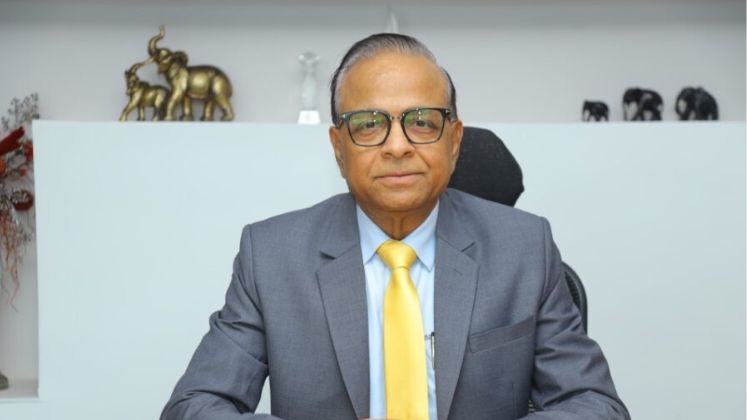
Top companies in the industrial workwear industry are confident about the growth in this segment. Kolkata-based Mallcom India Ltd., is one of them. This integrated manufacturer and distributor of head-to-toe protection equipment raked in a turnover of about Rs. 410 crore in the last fiscal year. A few years ago, textile and apparel player Arvind Ltd., collaborated with JCB India Ltd., a leading manufacturer of earthmoving and construction equipment in India, to launch a distinctive line of ready-to-wear industrial uniforms. Similar to upscale clothing, the rental business within the uniform segment is also on the rise in India. International companies like Lindström offer uniform rental services to numerous companies across various industries. The company, equipped with cleanroom facilities, is expanding its presence in India, recently branching out into NCR and Hyderabad.
We reached out via email to prominent companies in various sectors like hospitality (Zomato, Swiggy, IndiGo); mining (Vedanta Aluminium Limited, Hindalco) and construction (Afcons Infrastructure Limited, Reliance Infrastructure Limited, GMR Group). The email aimed to inquire about their emphasis on design of uniforms, sourcing, costs, challenges and related aspects. Unfortunately, we did not receive any response from them.
Designers revamp hospitality uniforms
As per the Ministry of Civil Aviation (MoCA), the present direct employment in Indian Aviation stands at 250,000, covering pilots, cabin crew, engineers, technicians, airport staff, ground handling, cargo, retail, security, administrative and sales personnel. This figure is expected to rise to approximately 350,000 by 2024.
Several airlines are modernising their uniforms to align with contemporary trends. For instance, renowned designer Manish Malhotra is collaborating with Air India to design new uniforms for over 10,000 of Air India’s flight crew, ground staff and security personnel by the end of 2023.
Airlines prioritise durability, functionality and breathability in fabric and trims for uniforms. Subpar fabrics can adversely affect both employees and the airline’s brand. Recently, a jury in California, US ruled that a clothing company should pay more than US $ 1 million to four American Airlines flight attendants who claimed that wearing its uniforms made them ill. The attendants argued that the uniforms contained traces of toxic chemicals, including formaldehyde and toluene, linked to health problems. Fabrics with formaldehyde-containing resins have been used for years to maintain wrinkle-free clothes and extend their lifespan.
Experts emphasised the prevalence of PV blend as the most popular fabric for corporate and hospitality uniforms in both shirts and trousers and claimed that the sector is estimated to grow between 25 per cent to 50 per cent annually.
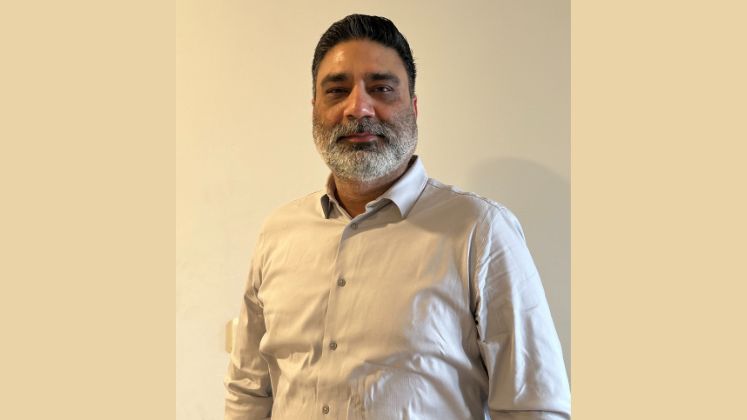
There’s an increasing emphasis on the design of uniforms, not just in the private sector but also in some government organisations. For instance, the staff at the Indian Parliament recently underwent a uniform makeover designed by NIFT, featuring ‘Nehru jackets’ and khaki-coloured pants. The traditional bandhgala suit for bureaucrats was replaced with a vibrant magenta or deep pink Nehru jacket. The dress of the security personnel and marshals stationed at parliament also saw a change.
Healthcare sector growing fast post-Covid
In the post-Covid era, there is a heightened emphasis on the health sector. The demand for healthcare professionals in India is surging due to factors such as population growth, aging, changing epidemiology and an increased prevalence of non-communicable diseases (NCDs).
As of November 2021, reports indicate 13,01,319 allopathic doctors, 2.89 lakh dentists, 32.63 lakh nursing personnel and 13 lakh Allied and Healthcare Professionals registered with the State Medical Councils and the National Medical Commission.
“Companies are now very much clear that their employees wearing the company’s uniform are their brand ambassadors so the thrust of the companies are now on good quality uniforms. The sector is growing almost 25 to 30 per cent on a YoY basis. Major challenge in this segment is quality that comes from a lack of awareness in the companies as most of the time they are not clear what exactly can serve their requirements. To overcome this we discuss deeply a lot to understand the companies’ requirements and ensure what can be best for them.” Hitesh Babariya Director, Atlas Infiniti
Recognising the importance of uniforms in private hospitals, state governments are also taking significant steps. Earlier this year, Haryana implemented a new dress code for doctors, nurses and paramedics in government hospitals. The objective is to establish uniformity and aid patient identification. Witnessing growth in this category, newer players are also entering into this segment. Surat-based Mediattire is one such company that entered into this business just a few months back and offers products like scrub suits, lab coats, OT gowns, patient gowns, etc.
Seizing opportunities in defence and private security sectors
India’s defence and security sectors offer substantial opportunities for uniform makers due to their sheer size. The Indian Army, comprising over 1.2 million troops, is in the process of procuring 11.7 lakh uniform kits for JCOs and ORs as of August 2023. The Army has secured Intellectual Property Rights (IPR) for the design and camouflage pattern of its newly introduced Camouflage Pattern Dress.
The improved uniform, designed by the country’s top fashion institute NIFT, has a contemporary look and functional design and the fabric has been made lighter, more durable, breathable, quick-drying and easier to upkeep. Apart from ordnance factories like state-owned defence company Troops Comfort Limited, headquartered in Kanpur, private giants like Arvind, Radnik Exports and Wildcraft are also supplying uniforms and rucksacks to defence forces.
What’s promising is the growing awareness amongst police departments, with several states seeking improved uniforms for their police force. Representatives from two Gujarat-based textile organisations, Ahmedabad Textile Industry’s Research Association (ATIRA) and the Surat-based Man-Made Textiles Research Association (MANTRA), recently attended a key meeting of the committee formed for ‘one nation, one police uniform’ about a year after the idea was mooted by PM Narendra Modi. The members aboard the Ministry of Home Affairs (MHA) panel shared expertise linked to the idea.
“Arvind Human Protection stands annually producing an impressive 4 million pieces of garments that transcend the conventional, catering to a diverse range of industries including Oil & Gas, Metal Manufacturing, Utility, Healthcare, Defence, Corporate Institutions, and more. What distinguishes us is our end-to-end approach, meticulously overseeing the entire production process from spinning to garmenting. Our commitment to innovation is underlined by the filing of more than 30 patents.” Parveen Kora Chief Marketing Manager, Human Protection Division, Arvind Limited
Similarly, the world’s largest private security industry in India has witnessed remarkable growth, extending its demand beyond the corporate sector to residential households and real estate complexes. With over 5 million private security guards outnumbering the 3.2 million police officers, the sector provides ample opportunities for uniform makers.
In India, there are thousands of agencies providing security guards and most of them invest between Rs. 1000 to Rs. 3000 per pair, covering all accessories.
Hurdles: Lack of security awareness and market fragmentation
In India, the landscape for uniform makers is riddled with challenges due to a lack of awareness and the diversified needs across industries. Sectors like healthcare, construction and hospitality demand tailored uniforms that align with safety standards and functional necessities. However, addressing this wide array of requirements is no small feat for manufacturers. Ensuring adherence to evolving regulations and strict quality standards, especially for specialised gear like flame-resistant clothing and PPE, poses a continuous challenge.
“Timely delivery with perfect fitting, quality materials and timely updates on the latest trends in the market are major challenges for us and we approve the sample the before final order, to overcome finishing and fitting challenges.” Sachindra Yadav HR head, JSS Group India
Moreover, the demand for customisation remains high. Each client seeks unique designs, logos, and specific colours, necessitating cost-effective yet efficient production. Fabric selection adds another layer of complexity. Finding materials that are both durable and comfortable while meeting industry-specific requirements at an affordable cost is an ongoing struggle.
(With exclusive inputs by Dheeraj Tagra)
| Private sectors and their workforce using uniforms |
|
| Construction sector | 71 |
| Automobile sector | 19 |
| Corporate sector, institutional (including hospitality sector (hotels, aviation, food processing, restaurants petrol pumps) |
27 |
| Healthcare sector | 5.7 |
| Private security guards | 0.5 |
| Mining | 1.3 |
| Energy sector | 0.1 |
| Government, semi government workforce | |
| Army, navy, airforce and paramilitary forces | 3.6 |
| State Police, states’ home guard | 3.1 |
| Transport (including railway, metro, roadways) | 2.1 |
| PSU | 1 |
| Postal department | 0.4 |
| NCC and NSS students | 5.2* |
(all figures in million)
(*students get uniforms from Government)


